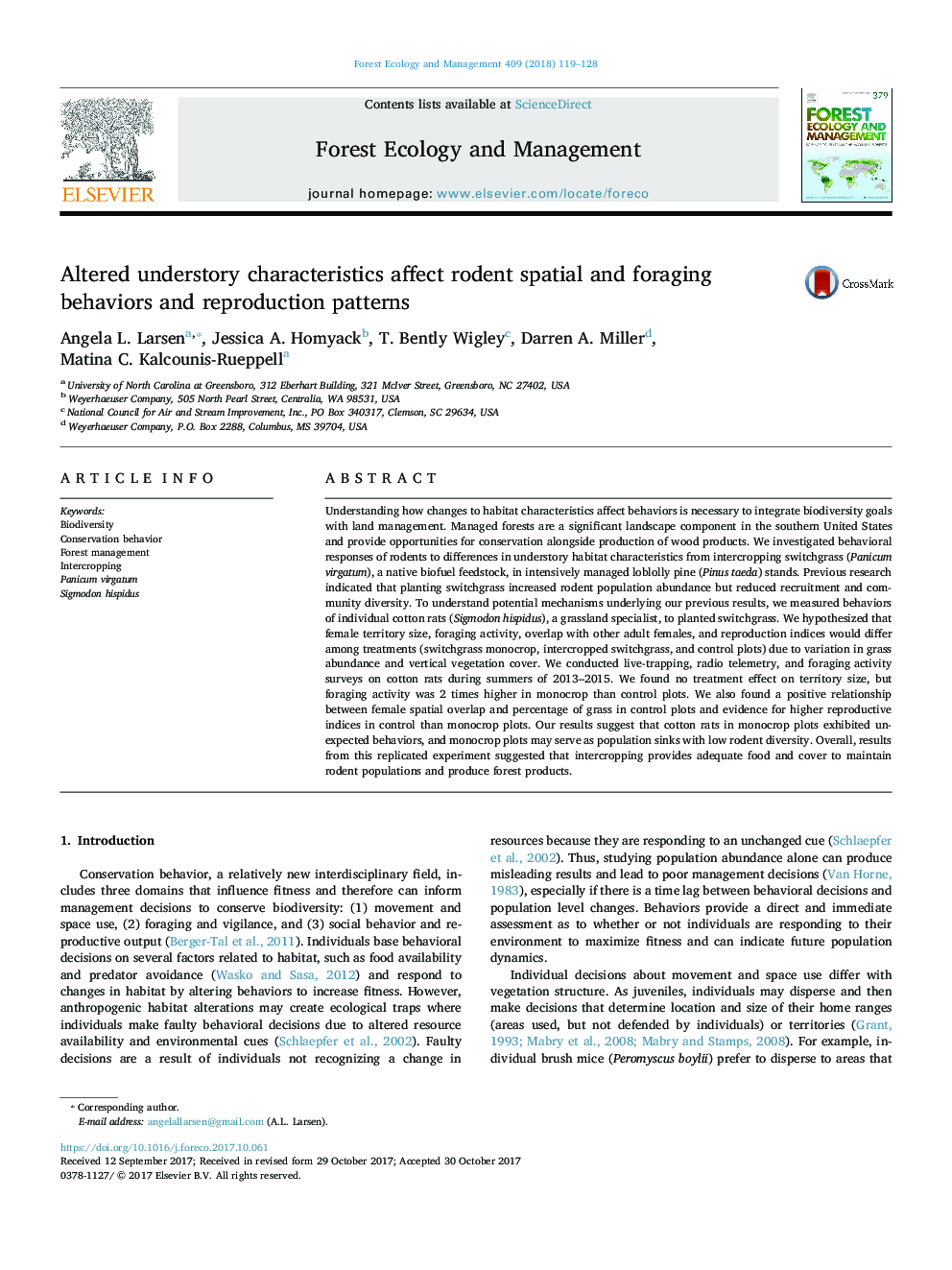| کد مقاله | کد نشریه | سال انتشار | مقاله انگلیسی | نسخه تمام متن |
|---|---|---|---|---|
| 6541876 | 1421349 | 2018 | 10 صفحه PDF | دانلود رایگان |
عنوان انگلیسی مقاله ISI
Altered understory characteristics affect rodent spatial and foraging behaviors and reproduction patterns
ترجمه فارسی عنوان
ویژگی های زیرزمینی تغییر می کند که رفتار و مکان های خوراکی جوندگان و الگوهای تولید مثل را تحت تاثیر قرار می دهد
دانلود مقاله + سفارش ترجمه
دانلود مقاله ISI انگلیسی
رایگان برای ایرانیان
کلمات کلیدی
موضوعات مرتبط
علوم زیستی و بیوفناوری
علوم کشاورزی و بیولوژیک
بوم شناسی، تکامل، رفتار و سامانه شناسی
چکیده انگلیسی
Understanding how changes to habitat characteristics affect behaviors is necessary to integrate biodiversity goals with land management. Managed forests are a significant landscape component in the southern United States and provide opportunities for conservation alongside production of wood products. We investigated behavioral responses of rodents to differences in understory habitat characteristics from intercropping switchgrass (Panicum virgatum), a native biofuel feedstock, in intensively managed loblolly pine (Pinus taeda) stands. Previous research indicated that planting switchgrass increased rodent population abundance but reduced recruitment and community diversity. To understand potential mechanisms underlying our previous results, we measured behaviors of individual cotton rats (Sigmodon hispidus), a grassland specialist, to planted switchgrass. We hypothesized that female territory size, foraging activity, overlap with other adult females, and reproduction indices would differ among treatments (switchgrass monocrop, intercropped switchgrass, and control plots) due to variation in grass abundance and vertical vegetation cover. We conducted live-trapping, radio telemetry, and foraging activity surveys on cotton rats during summers of 2013-2015. We found no treatment effect on territory size, but foraging activity was 2 times higher in monocrop than control plots. We also found a positive relationship between female spatial overlap and percentage of grass in control plots and evidence for higher reproductive indices in control than monocrop plots. Our results suggest that cotton rats in monocrop plots exhibited unexpected behaviors, and monocrop plots may serve as population sinks with low rodent diversity. Overall, results from this replicated experiment suggested that intercropping provides adequate food and cover to maintain rodent populations and produce forest products.
ناشر
Database: Elsevier - ScienceDirect (ساینس دایرکت)
Journal: Forest Ecology and Management - Volume 409, 1 February 2018, Pages 119-128
Journal: Forest Ecology and Management - Volume 409, 1 February 2018, Pages 119-128
نویسندگان
Angela L. Larsen, Jessica A. Homyack, T. Bently Wigley, Darren A. Miller, Matina C. Kalcounis-Rueppell,
